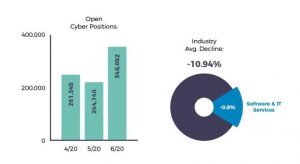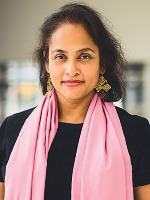‘Health For All’–the theme for World Health Day this year—highlights the urgent need to reach underserved communities.
Much progress has been achieved in global health. For example, between 1990 and 2015, the number of children who died before age five decreased by more than half due to the expanded delivery of lifesaving interventions like bednets and vaccines.
But health for all is still a long way off. Every day, 830 mothers and 16,000 children in low-resource settings die of preventable and treatable diseases because they could not access the care they needed.
Can information and communication technologies (ICTs) offer a solution to fill the service delivery gap?
During a lively discussion held at the World Summit for the Information Society (WSIS) Forum 2018, the answer was a resounding yes.
ICT solutions to access remote populations to end malaria
Malaria control is having a winning moment: globally, malaria cases declined by one third; deaths are down by half; and the end of malaria is in sight in a number of countries.
“In India, for 8,800 people there is only one doctor. We will not be able to solve the gap if we are not using technology”–Sujay Santra, iKure founder and CEO
But there is an ever-present risk of malaria resurgence, and ICTs can enhance the constant control and surveillance efforts needed to prevent malaria epidemics from recurring.
“Drone software has already made improvements in malaria for delivering medicines in Rwanda, Malawi, and Tanzania to remote sites via drone” said Joshua Levens, Manager of Advocacy and Resource Mobilization Committee at the RBM Partnership to End Malaria.
“Better maps have allowed us to find the best routes for deploying staff, for effective procurement and supply management, patient referral, and mapping at border areas between countries” he added.
But in hard-to-reach areas, mapping data may not be available or sufficiently accurate. And information systems at the community, facility, and national levels, as well as cross-border areas are sub-optimal. “We need to continue to push for ICT solutions to these challenges” he urged.
iKure: mobile solutions in India for the last mile
iKure, founded in 2010, provides Primary Health Care to communities in rural India.
“In India, for 8,800 people there is only one doctor”, said Sujay Santra, founder and CEO of iKure. “(…) we will not be able to solve the gap if we are not using technology”.
iKure trains and equips a group of health workers, and integrates innovative point-of-care technologies into their services. “We use different kinds of devices, explained Sujay Santra. “We have one that can scan the ear canal through a mobile phone”.
A core medical team stationed at a hub clinic visit peripheral clinics on a regular basis.
iKure developed a cloud platform technology called Wireless Health Incident Monitoring System or WHIMS that captures the flow of patient data, and is used as a diagnostic tool to analyze patient information for screening, early detection, and monitoring of diseases.
“We give digital cards to our patients. When our health workers go with their medic bags and mobile phones to remote parts of the country with no internet or electricity, they can scan the card, and automatically all data of patient is shown. (…) When health workers are back in the internet zone the information goes back to the cloud which is available to doctors”, said Sujay Santra.
iKure has reached 800,000 patients across 6 states in India, who now have access to on-site general medicine, maternal and child health care, eye care, and telemedicine services.
With the data collected through WHIMS, the iKure team works with partners to identify health issues in communities and design holistic solutions for prevention.
Nexleaf Analytics: strengthening the supply chain with data
“Vaccines save lives, but many children receive a vaccine with lost potency and efficacy as a result of poor refrigeration” said Martin Lukac, CTO and co-founder of Nexleaf Analytics.
Indeed, vaccine fridges in rural clinics usually fail due to faulty machinery, and health personnel are often too busy to respond quickly enough.
To address this problem, Nexleaf analytics built a solution called ColdTrace.
A ColdTrace sensor is placed inside a vaccine refrigerator, and a device is positioned nearby that can send SMS alerts to health workers whenever the vaccines are in danger.
The temperature data is stored in a dashboard which provides real-time, aggregate, or historical data, which can be used to identify chronically failing fridges, remotely diagnose certain common causes of fridge failure, and fix fridges remotely with a simple phone call to the health facility.
Martin Lukac explained, “In Mozambique we worked with one technician (…) who looked at the data, identified all the facilities that were performing poorly and placed a phone call to those facilities. Just after placing phone calls and providing advice to local staff at facilities a lot of change happened”.
Nexleaf also provides training and develops country-specific Standard Operating Procedures (SOPs) to help clinic personnel respond to ColdTrace alerts effectively.
Source of Article



